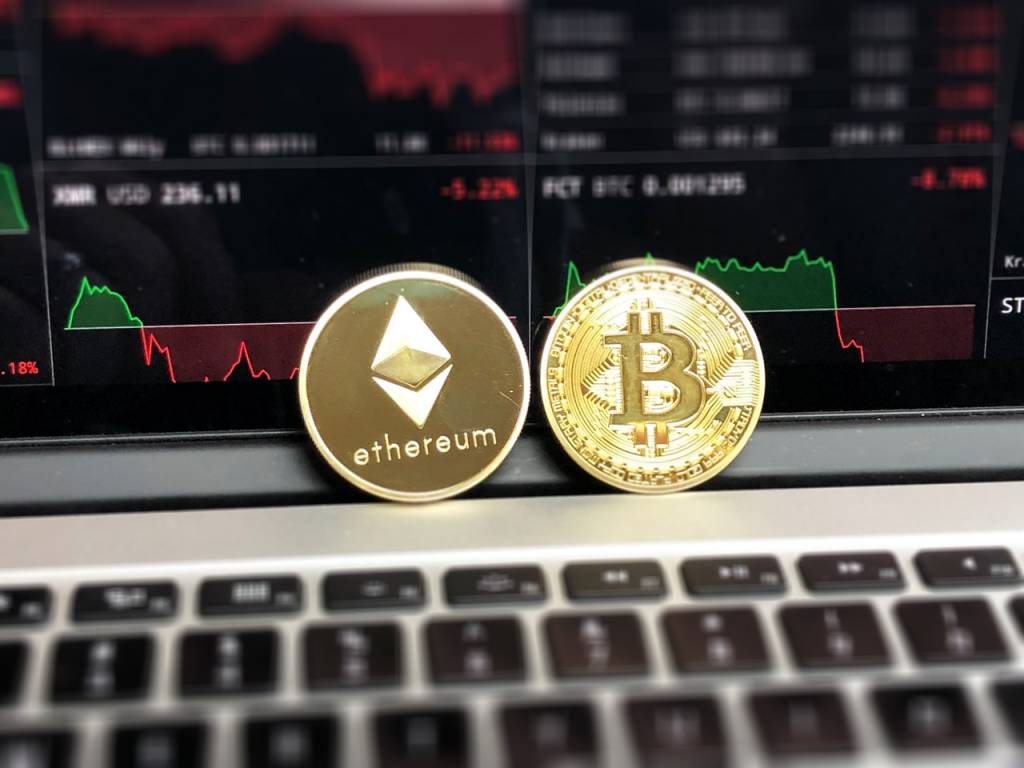Do you know why AI is poised to disrupt international trade? What on earth is a borrowing base? In this two part series, we took a moment to demystify some of the buzzwords and 2019 trends, an A to Z around trade, tech and finance.
An A to Z of Trade Terms 2019: Trade Finance Debunked (Part 1 – A to M)
Earlier this month, we announced the Tradetech 40 – the top companies using tech to disrupt trade. Building on from this, we’ve compiled an A to Z of 26 terms that any trade finance professional should be familiar with.
- Artificial Intelligence (AI)
- Borrowing Base
- Credit Insurance
- Distributed Ledger Technology (DLT)
- E-Documentation
- Free on Board (FOB)
- Guarantees
- HSN Code
- Incoterms (2020)
- Joint Comprehensive Plan of Action (Iran Sanctions)
- KYC: Know Your Customer (Trade Finance Compliance)
- Letters of Credit (LCs)
- Marco Polo
Artificial Intelligence (AI)
AI took centre stage once again last year with companies like Tradeteq, who challenge traditional credit scoring techniques to increase the accuracy of predicting credit events for companies (vs the Altman Z-score). Using neural networks and machine learning, AI has proven better techniques for making accurate credit decisions, allowing lenders to reject fewer loan applications and directly support global growth – a force of good for trade, in our opinion.
Borrowing Base
Borrowing Base, – a familiar term among producers, traders and commodity financiers – is used to describe a company’s pool of assets available, from which a finance facility from a bank can then be determined. In other words, the amount of credit or working capital that can be granted to a company, based on the value of their assets (for example, collateral can include: account receivables, inventory and equipment). Read the TFG Borrowing Base guide here.
Editor’s Note: We thought long and hard about using ‘Brexit’ or ‘Blockchain’ here, but given the amount of coverage on both, we stuck with Borrowing Base.
Credit Insurance
Short-term credit insurance plays a significant role in cross-border trade finance, thought to be around $1.6tn USD per year. Credit insurance helps businesses transfer risk over to an insurer, protecting the policyholder in the event of the business or customer becoming insolvent or failing to pay its trade credit debts.
In recent years, there has been a large appetite amongst credit insurers and banks to standardise wording across the board, with the BAFT Master Risk Participation Agreement being a great example of the end goal for standardisation.
Distributed Ledger Technology (DLT)
DLT was once something we were cautiously optimistic about at TFG, but given the initial proof of concepts in the trade finance sector, it now has real potential. DLT can help enable paperless trade by digitalisation of documentation (such as Bills of Lading), as well as reducing data errors, but the implementation sees challenges around scalability, interoperability and privacy issues. The current adoption of distributed ledger technology has been fairly slow and limited in its application. It’s important that we don’t create data silos and ensure different pilot ecosystems can connect.
E-Documentation
In a similar fashion to DLT, electronic documentation (or the digitalisation) of trade is a shared goal for many in the international trade industry.
As commerce goes back thousands of years, the paper-based nature of trade finance is inevitable, and instruments such as the Documentary Letter of Credit goes back hundreds of years and is still a well practised method of risk mitigation today.
In today’s open account world, the adoption of technology and IT systems which are interoperable have allowed for instruments such as the Bank Payment Obligation, SWIFT MT 798 and International Chamber of Commerce Rules around Uniform Rules for Bank Payment Obligations (URBPO) to transform and increase efficiencies in the financing of trade. One of the largest challenges within e-documentation however, is the acceptance of e-signatures in particular markets. Many laws still do not accept electronic signatures as guarantees, and since 2001, a UN working group continues to influence local legislation around the global adoption of electronic signatures, also known as the UNCITRAL Model Law on Electronic Signatures.
Free on Board (FOB)
Free on Board (FOB) is the most commonly used International Commerce Term (Incoterm) for containerised goods, particularly for commodities. When a seller exports goods by boat in a container, they are responsible for those goods up until the point they are on board the ship, at which point, the responsibility of the goods then transfers over to the buyer. This means that the seller must also obtain necessary export licenses or local authorisations for exporting goods, but they’re not responsible for insurance or risk whilst the goods are in transit. Read the TFG Incoterms Guide here.
Guarantees
A guarantee (or Bank Guarantee) is a financial undertaking from a bank or lender on behalf of a borrower, in favour of the supplier or seller of goods and services. A type of trade finance product, if the borrower cannot make payment to the supplier, who has produced and/ or shipped the goods as requested, the guarantor bank will take the risk and make the payment.
HSN Code
HSN is short for ‘Harmonized System Nomenclature.’ A World Customs Organization (WCO) project, the HSN is a form of nomenclature for the classification of around 5000 products and goods, which is useful for taxation purposes, universal import and export data to provide comparable data sets across different countries, and for customs and tariffs declarations. Established in 1988, there are now over 200 participating countries using the HSN naming convention.
Incoterms (2020)
A large proportion of international trade is facilitated by a set of universal rules, originally established by the International Chambers of Commerce. First developed in 1936, Incoterms have undergone several developments and changes, marked by the way commerce has evolved over the past 8 decades. 2019 will mark the release of the 2020 Incoterms, applicable from the 1st January 2020. The key changes for Incoterms 2020 are likely to be around simplification, removing superfluous phrases, as well as addressing non-English speaking markets. We’ll be first to report the new changes to Incoterms 2020, but for now, Incoterms 2010 apply for international commerce.
Joint Comprehensive Plan of Action (Iran Sanctions)
In October 2018, we spoke to Lord Lamont, the UK trade envoy for Iran, but more famously, Chancellor of the Exchequer in the John Major Government.
The Joint Comprehensive Plan of Action (JCPOA) for Iran, was set up in the US even before Trump’s presidency, retaining primary sanctions, which meant that it was illegal for US companies to deal Iran across most sectors and services. This included the banking sector, meaning that many European banks who dealt with American banks could no longer operate or deal with Iran. The result? – there are enormous difficulties for Iranian businesses around accessing trade finance and forming correspondent banking relations, the inability to open Letters of Credit, and making payments through BACS systems.
With full sanctions now in play between the US and Iran, the Iranian economy continues to struggle, with the Iranian rial losing some 70% of its value, stimulating a flight of capital, and creating a very serious situation of inflation in the country.
KYC: Know Your Customer (Trade Finance Compliance)
Financial institutions today are required to ensure their customers are not engaged in illegal activities around money laundering or terrorist activities. Compliance activity within banks is continuing to rise according to Thomson Reuter’s Cost of Compliance Report (2017), where 60 percent of firms expect the cost of senior compliance staff to increase either slightly or significantly in the next year. For customers, however, some 89 percent of corporate customers had unsatisfactory KYC experience and 13 percent moved financial institutions as a result.
In 2019, we could see blockchain and distributed ledger technology offer such transparency in transaction data in terms of the movement of transaction and company information and identity, as well as the storage of sensitive assets on ledgers. Although still at a very nascent stage, the KYC use case might be able to allow the movement of information and identity between numerous parties given the immutability of shared transactions.
Letters of Credit (LCs)
Letters of Credit (like Bank Guarantees) are trade finance products which assure payment to a seller within a time period if obligations are met.
When a buyer and supplier enter into a contract of agreement, the buyer’s bank (issuing bank) will issue an LC in favour of the supplier, normally via its local advising bank in their home market. As soon as goods are shipped and shipping documents are presented to their advising bank, they are verified by the issuing bank. Payment is then made to the advising bank and then on to the seller.
Marco Polo
Marco Polo is an Italian Merchant from the late 13th century, most famous for his c.1300 book: The Travels of Marco Polo, describing Europe’s wealth and China’s size.
For trade financiers though, Marco Polo is more commonly known as an initiative to utilise distributed ledger technologies (DLT) to power an open account trade finance platform on R3’s Corda blockchain network, running on the TradeIX Platform.
The consortium of currently comprises 13 leading member banks, with a shared aim of sharing data across one secure platform, which in turn reduces risk, costs and time when executing cross-border trade.
At Trade Finance Global, we believe that interoperability is the key to the success of trade finance successfully using DLT to enhance trade. We have seen the rise of several consortia around the world, and eagerly await the move from proof of concept to real-time trade on DLT.
That’s all for now folks, time for a coffee break. We’ll be back very shortly with the rest of our Trade Finance ‘A to Z’, so stay tuned for updates, or subscribe to our newsletter here to be the first to hear when part 2 comes out. If you can’t wait, here’s what’s coming in our next round of Trade Finance A to Z (N to Z).
- No Deal (Brexit)
- Open Banking
- Platforms (SCF, Receivables & Invoices Management Technology)
- Quotas and Tariffs
- Receivables Finance
- Securitisation
- Treasury and Cash Management
- UCP600 and URDP
- Voltron & R3 (Blockchain Consortia)
- World Trade Organisation (WTO)
- Xenocurrency and Foreign Exchange (FX)
- Yield (on Trade Finance Assets)
- Zimbabwe (Africa, Trade)
 Australia
Australia Hong Kong
Hong Kong Japan
Japan Singapore
Singapore United Arab Emirates
United Arab Emirates United States
United States France
France Germany
Germany Ireland
Ireland Netherlands
Netherlands United Kingdom
United Kingdom











Comments are closed.